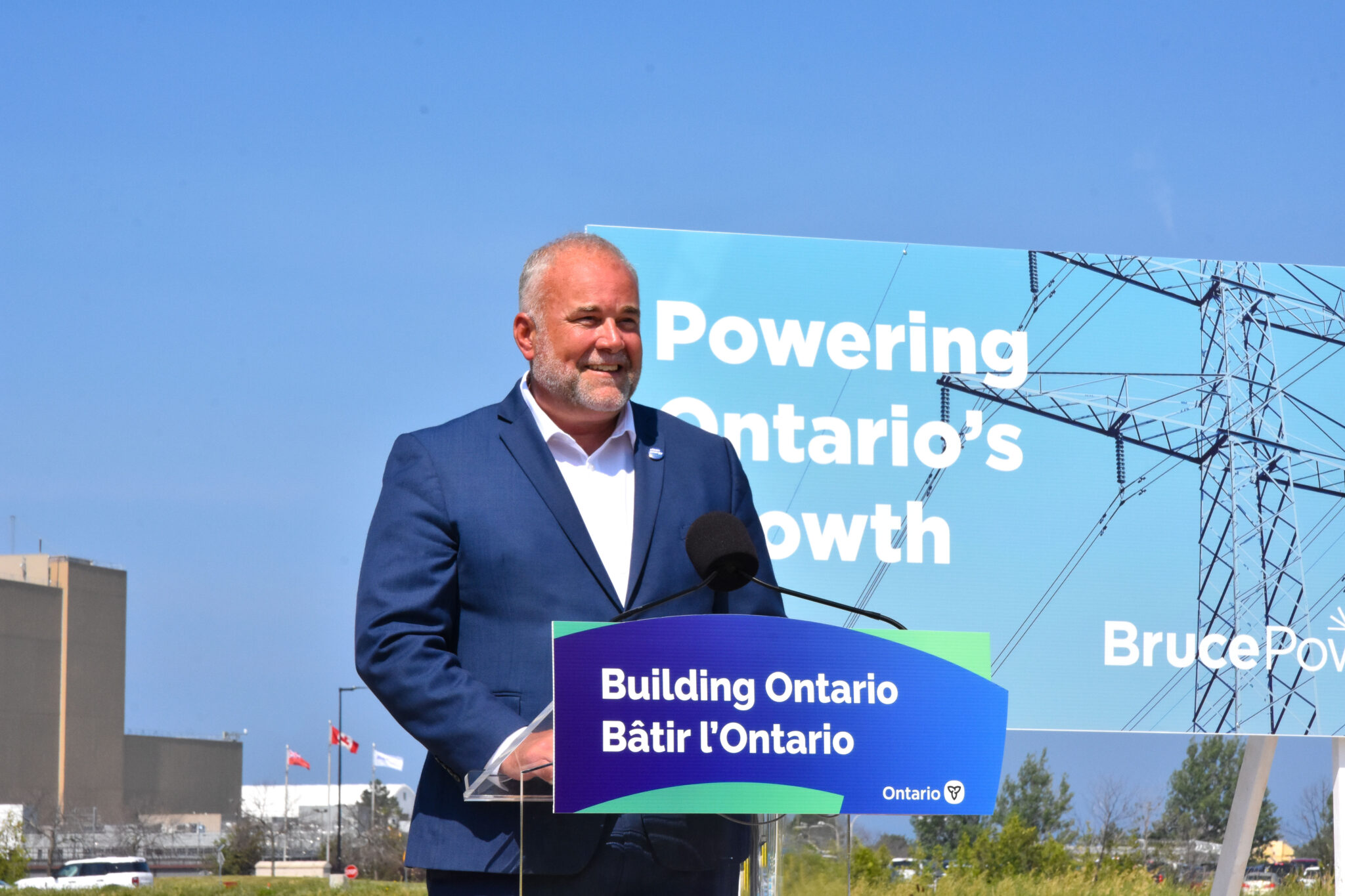 Canada’s Ontario government has launched pre-development work to site the first large-scale nuclear newbuild in 30 years to meet rising electricity demand, power electrification and fuel economic growth. Bruce Power is to begin community consultations and conduct an environmental assessment for federal approval to determine the feasibility of siting up to 4800 MWe of new nuclear generation on its current site.
Canada’s Ontario government has launched pre-development work to site the first large-scale nuclear newbuild in 30 years to meet rising electricity demand, power electrification and fuel economic growth. Bruce Power is to begin community consultations and conduct an environmental assessment for federal approval to determine the feasibility of siting up to 4800 MWe of new nuclear generation on its current site.
The eight pressurised heavy-water Candu reactor units at the Bruce site (Bruce A - units 1-4, and Bruce B - units 4-8) began commercial operation between 1977 and 1987. Bruce Power’s CAD13bn ($10bn) Life Extension Programme, which includes Asset Management and Major Component Replacement, which began in 2016, aims to extend the life of the site until 2064.
For the first time since 2005, Ontario’s electricity demand is rising. The government is already implementing a plan to meet rising demand this decade, but experts at Ontario’s Independent Electricity System Operator (IESO) have recommended additional measures. These include siting and environmental assessment work for long-lead assets, including nuclear power, to meet increasing electricity demand in the 2030s and beyond driven by strong economic growth, electrification and population increase.
Ontario Minister of Energy Todd Smith noted: “With our plan already in place to meet demand this decade, we are starting the pre-development work to identify future generation options, including reliable, affordable and clean nuclear energy, that will power our province into the future.”
Federal approval is the first step in the comprehensive approval process for building new nuclear power generation projects, which could take a decade or more. The Ontario government says recognising new nuclear generation will be critical to making the province’s electricity grid even cleaner. “Ontario will continue to work with the federal government to identify and highlight opportunities to reduce inefficiencies and minimise duplication when it comes to federal major project reviews to reduce emissions by getting clean energy projects built quicker.”
Early planning will ensure the province has a reliable, low-cost and clean option available to power the next major international investment, the new homes being built in the province, and industries and sectors across the province as they grow and electrify. “A new nuclear station would also create thousands of new jobs and generate billions of dollars in economic activity across the province for decades to come, while helping to reduce emissions and further Ontario’s clean electricity advantage.”
“Nuclear power has been the stable backbone of Ontario’s clean electricity system for decades and Bruce Power is ready to play an integral role in addressing the province’s future needs, while supporting good jobs and economic prosperity for the future,” said Mike Rencheck, President and CEO of Bruce Power. “We are starting the federal Impact Assessment process to look at new nuclear generation on our site now, to maximize the future optionality for clean electricity in the province.”
This pre-development work will help evaluate the suitability of the site by examining the impacts of a new facility on the environment, the public and Indigenous communities. It will take several years to complete, involving significant public input and consultations with Indigenous communities, and is a pre-requisite for the Canadian Nuclear Safety Commission’s multi-stage licensing process for new large-scale nuclear stations.
Ontario and Bruce Power are also committed to continuing cooperation and engagement with both Saugeen First Nation and Chippewas of Nawash Unceded First Nation communities (collectively the Saugeen Ojibway Nation) when it comes to energy planning and future projects on their traditional territory.
IESO’s Pathways to Decarbonization Report forecasts that in less than 30 years, Ontario could need to more than double its electricity generation capacity from 42,000 MW today to 88,000 MW in 2050. The report forecasts an additional 17,800 MW of nuclear power could be required to meet that increased demand.
To meet growing electricity demand this decade, Ontario has already invested more than CAD1bn in energy efficiency programmes. It is supporting the continued safe operation of the Pickering Nuclear Generating Station and is building Canada’s first grid-scale small modular reactor (SMR).
Currently, 18 of Canada's 19 operating Candu nuclear units are in Ontario, providing half the province's electricity. This nuclear capacity enabled the province to entirely phase out coal-fired electricity generation in 2014. However, plans for new large-scale reactors had been shelved in favour of projects by Bruce and Ontario Power Generation (OPG) to refurbish existing reactors to extend their operating lives. Ontario, Alberta, New Brunswick and Saskatchewan have adopted a plan to develop and deploy SMRs and and OPG is preparing a site for a grid-scale SMR at a site adjacent to the Darlington NPP.
Image: Ontario's Minister of Energy Todd Smith announces the government's support to advance the long-term planning and consultation work required to explore nuclear expansion options on the Bruce Power site (courtesy of Bruce Power)



